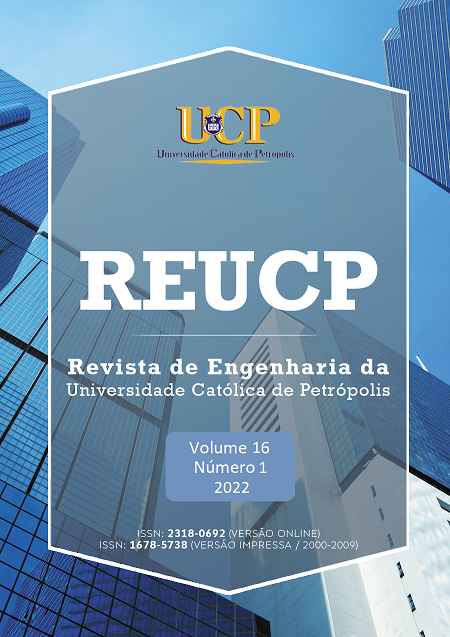PO INFLUENCE OF THE TYPE OF MINERAL ADDITION IN BINARY AND TERNARY MIXTURES ON THE ECORR, RP, ICORR AND EIS OF CONCRETES EXPOSED TO AGGRESSIVE CONDITIONS CONTAINING CHLORIDES
Abstract
The focus of this paper is to determine the parameters of corrosion potential (Ecorr), polarization resistance (Rp) and electrochemical corrosion rate (Icorr) of concrete exposed to the aggressive condition, through weekly cycles of wetting in NaCl solution at 50 g/l and drying, for 300 days under the influence of the variables water/binder ratio - w/b (0.40 and 0.60) for better visualization of the corrosive phenomenon and the type of concrete (binary mixture of metakaolin in the content of 10% partial replacement by mass of cement, compared to reference concrete – without additions). In addition, for water/binder ratio - w/b of 0.60, the ternary mixture of silica fume and nanosilica was also evaluated. As a result, concretes with mineral additions showed higher Rp values and lower corrosion rates (less than 1.0 μA/cm²). The effect of the w/b ratio was significant for concretes without mineral additions and less important for concretes with mineral additions. In particular, the concrete without additions and a w/b ratio of 0.60 presented a significant corrosion value and a very low value of Rp (2.3 kΩ· cm²), denoting an intense corrosive phenomenon. Concretes with mineral additions showed Rp values between 13 and 21 kΩ· cm² and they remained in a range of active corrosion initiation.
Downloads
Downloads
Published
Issue
Section
License
Autores que publicam nesta revista concordam com os seguintes termos:
I. O autor detém o copyright da sua contribuição, que abrange todos os objetos digitais que podem resultar na publicação eletrônica subsequente ou de distribuição. Após a aceitação da obra, o autor concede definitivamente à Editora o direito de primeira publicação da obra.
II. Ao enviar sua contribuição à REUCP, o autor assume e garante que:
1. Não foi previamente publicada nem está sendo avaliada por outra editora ou veículo de comunicação;
2. Não está pendente de revisão, exceto das eventualmente exigidas durante o processo editorial da REUCP;
3. As opiniões emitidas em sua obra são de sua inteira e exclusiva responsabilidade;
4. A obra não contém declaração falsa ou violação de trabalhos ou de direitos de terceiros;
5. A obra não contém difamação, invasão de privacidade ou assunto ilegal;
6. A revista poderá submeter seu original à avaliação de pessoas qualificadas e conservará sigilo e anonimato dos seus avaliadores/pareceristas;
7. A revista tem o direito de efetuar, em seu original, alterações de ordem normativa, ortográfica e gramatical, com vistas a manter o padrão culto da língua, respeitando, porém, o estilo autoral;
8. Concorda em indenizar a Editora UCP por violação de direito autoral ou qualquer outro processo movido por terceiros decorrente da publicação de seu trabalho (artigo ou resenha) na REUCP.
9. Concede à REUCP e à Editora UCP, bem como seus agentes, o direito não exclusivo e perpétua licença para publicar, arquivar e tornar acessível a obra, no todo ou em parte, em todas as formas de mídia agora ou no futuro conhecidas sob uma Licença Creative Commons 3.0 ou seu equivalente, que, para evitar dúvidas, permite que outros copiem, distribuam a obra sob as condições descritas no site da Creative Commons.
10. A pedido da Editora, concorda em fornecer prontamente à Editora UCP, às expensas do próprio autor, prova escrita das permissões, licenças e autorizações para uso de material de terceiros incluídos em sua contribuição (artigo ou resenha) à REUCP.
III. Ao enviar sua contribuição à REUCP, o autor concorda com os termos desta declaração.

